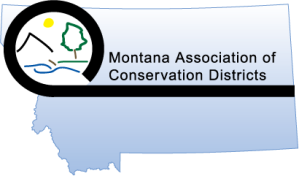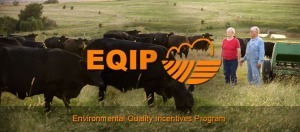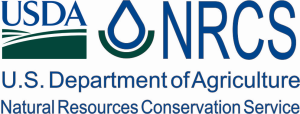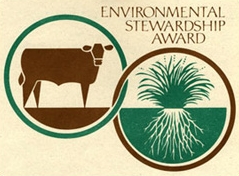Governor Bullock Signs Executive Order Establishing the Sage Grouse Habitat Conservation Program
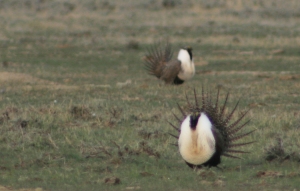 Helena, Mont. – Today, Governor Steve Bullock was joined by representatives from natural resource industries, ranchers, wind power advocates, sportsmen, and conservationists, as he signed an executive order establishing the Sage Grouse Habitat Conservation Program. The Program, which was developed from the ground up, and has broad support from a diverse group of interests, seeks to maintain state management of the Sage Grouse by protecting its habitat, while respecting the private property rights of Montanans.
Helena, Mont. – Today, Governor Steve Bullock was joined by representatives from natural resource industries, ranchers, wind power advocates, sportsmen, and conservationists, as he signed an executive order establishing the Sage Grouse Habitat Conservation Program. The Program, which was developed from the ground up, and has broad support from a diverse group of interests, seeks to maintain state management of the Sage Grouse by protecting its habitat, while respecting the private property rights of Montanans.
“Montanans recognize that it is in the best interest of our state, its economy, and our quality of life, to maintain state management of the Greater Sage-grouse,” Bullock said of the executive order. “Through a public process, and the work of a diverse group of stakeholders, we’ve developed a dynamic, and science-based approach to ensure this bird remains under state management, and is not listed under the Endangered Species Act.”
Once established, the Program will work to implement the requirements laid out in the executive order, including a review process for actions that might impact the bird or its habitat, including industry-specific measures. In addition, the order addresses, among other topics:
- Adopts a comprehensive Program for keeping sage grouse management in the states hands;
- Recognizes the important role that Montana’s private landowners play in sage grouse conservation and the need for voluntary incentives to help those landowners to stay on the land and preserve vital sage grouse habitat;
- Creates the Sage Grouse Habitat Conservation Program and the Montana Sage Grouse Oversight Team, attached to the Governor’s Office, to maintain state leadership, administer the program based on sound science, and continue to bring Montanans together to move sage grouse management forward;
- Strikes the appropriate balance to preserve the sage grouse and its habitat and protect valid rights and existing land uses and activities; and
- Ensures that Montana and Montanans will continue to manage this iconic species for the benefit of future generations – and continue to economically prosper from the industries that have existed in sage grouse country.
In addition, the executive order makes it clear that existing land uses and activites are not subject to the order, some uses and landowner activities are exempt from compliance with the strategy, including county road maintenance, and production and maintenance activities associated with existing oil, gas, communication tower, and power line facilities.
“We appreciate the efforts and leadership from Governor Bullock to ensure that management of the sage grouse remains in state hands,” said Dave Galt, Executive Director of the Montana Petroleum Association. “By working together, we’ll ensure that we can protect not only this bird, but also economic opportunity and quality of life for all Montanans.”
“Continued state management of the sage grouse is important for all Montanans, especially for cattle ranchers,” Errol Rice, Executive Vice President of the Montana Stockgrowers Association said. “With an eye towards solutions, stakeholders with diverse viewpoints have come together to find science-based ways to ensure that we are protecting this bird, while respecting the needs of Montana ranching families.”
“We applaud the Governor’s willingness to step up to the plate to launch this important conservation program. Science shows that business-as-usual will have devastating effects on sage-grouse over the long-term. We all need to follow the emerging science and work closely together to conserve this iconic species. And what’s good for sage-grouse and sagebrush is good for a whole host of at-risk wildlife species—making this an important conservation program for the state of Montana and our wildlife,” said Janet Ellis, Program Director for Montana Audubon.
“We all have a role to play in ensuring the state retains management of the sage grouse for the benefit out our state’s economy and quality of life,” Glenn Marx, Executive Director of the Montana Association of Land Trusts said. “Through incentive-based conservation projects and actions, this plan recognizes that private land owners will play an important part in our success going forward.”
The Program will be administratively attached the to the Governor’s Office. When fully implemented, the Program will have up to six full-time staff. The Governor’s upcoming budget will include funding for the program, however until that budget is approved, the Governor intends to work with stakeholders to raise private funds help the Program get off the ground.
In addition, the Governor indicated that his upcoming executive budget will include a proposal for a Sage Grouse Stewardship and Conservation Fund, designed to, among other objectives, promote and fund voluntary incentive-based non-regulatory programs and practices on private land to conserve sage grouse habitat (if approved by the Legislature).
The executive order was based off of recommendations of the Greater Sage-grouse Habitat Conservation Advisory Council, which Bullock established in 2013. The Advisory Council gathered information, and brought stakeholders and experts together in a public process to recommend conservation measures to address the primary and secondary threats to the Greater sage-grouse in Montana. These recommendations were presented to Bullock in January 2014.
The executive order is available online at: http://governor.mt.gov/Portals/16/docs/2014EOs/EO_10_2014_SageGrouse.pdf
(This press release is courtesy of Governor Bullock’s office)
###




